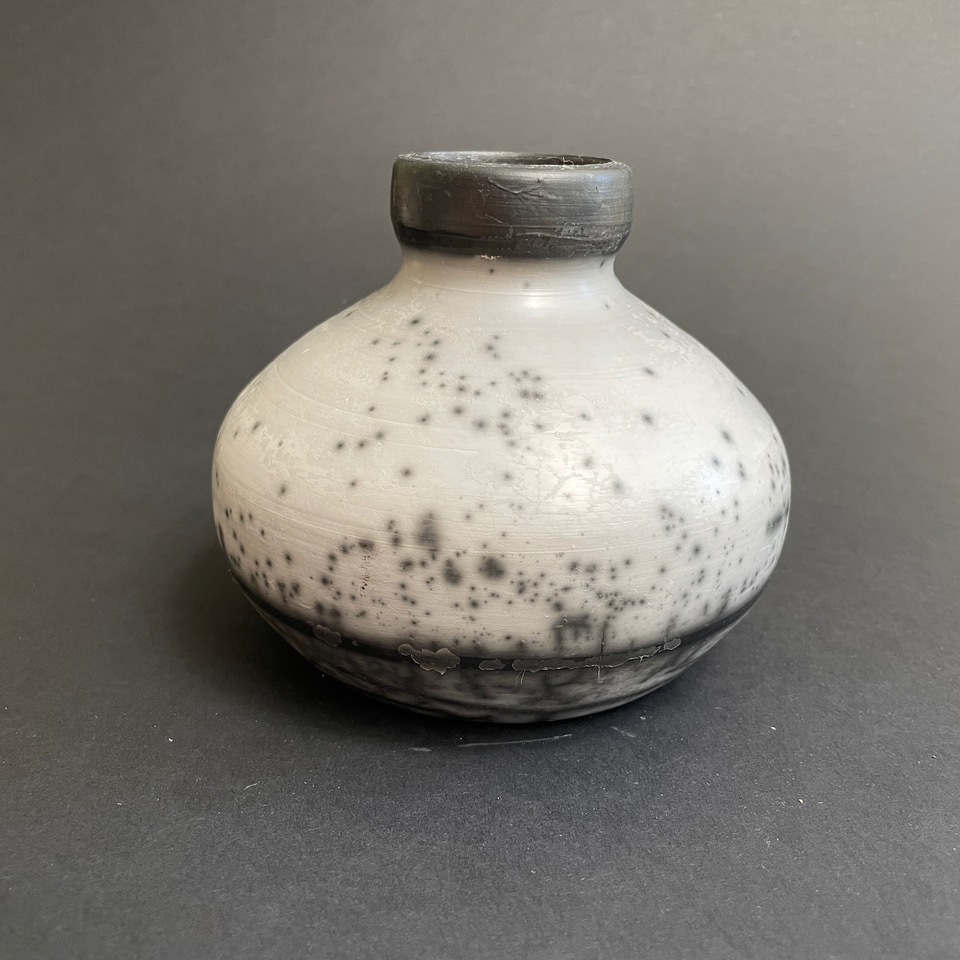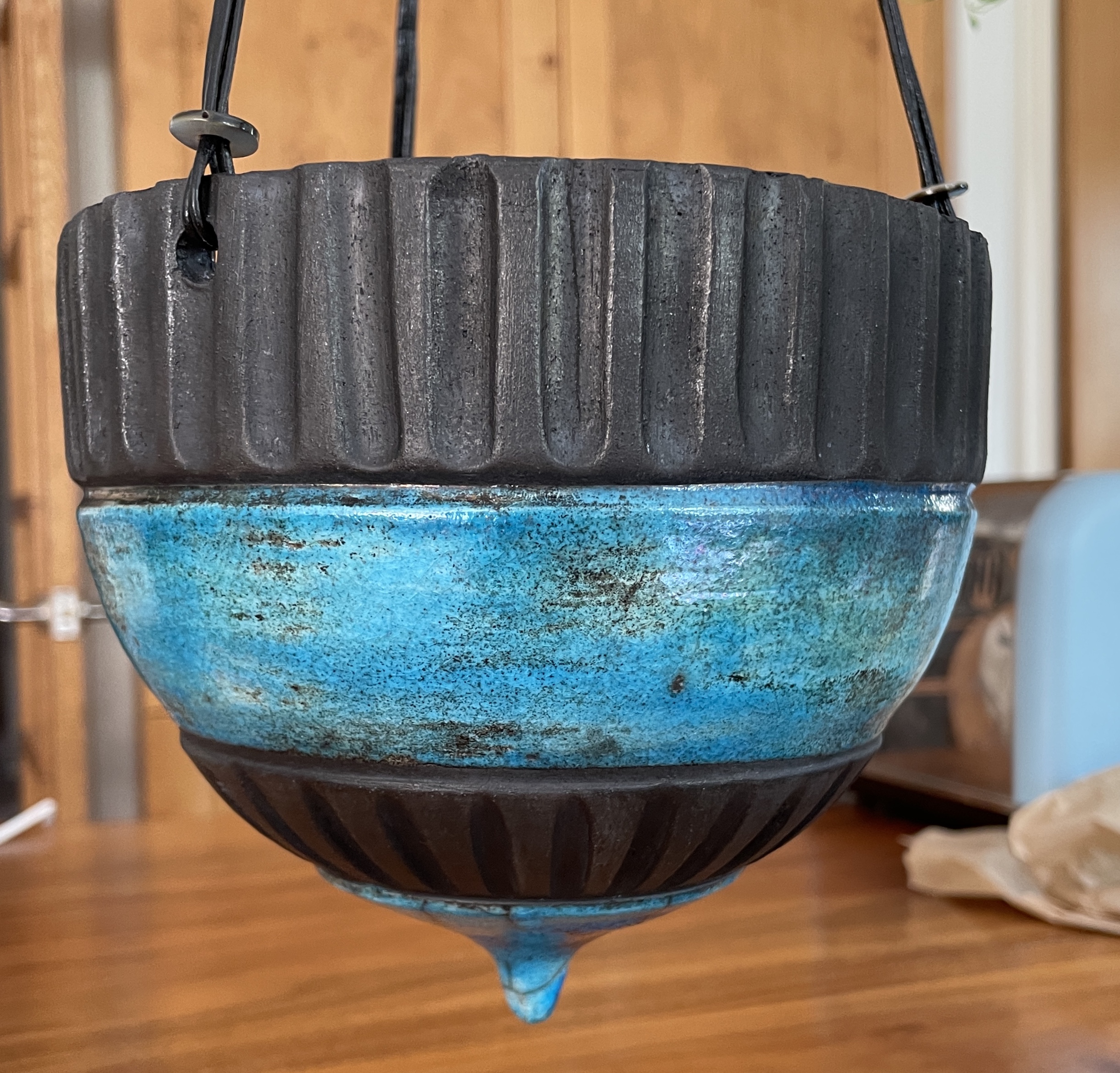
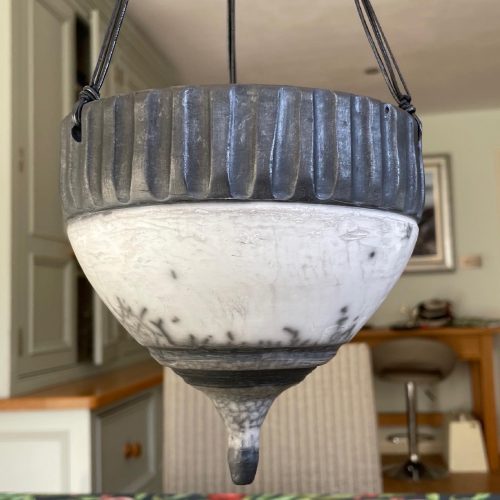
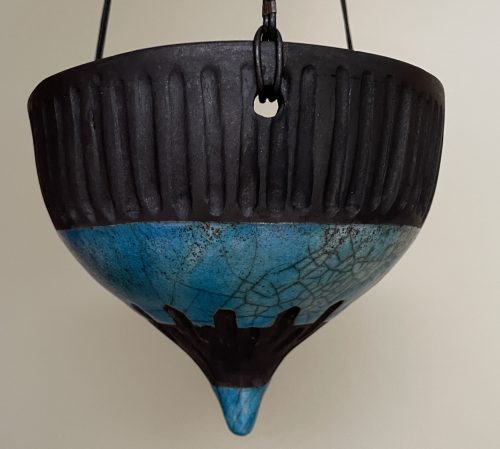 Unique raku planters. Made from stoneware clay and raku-fired with a copper based glaze, this planter is strung with leather thong.
Unique raku planters. Made from stoneware clay and raku-fired with a copper based glaze, this planter is strung with leather thong.
Ideal for conservatories or a summer patio feature.
Raku originates in Japan where it was part of the tea ceremony. It was modified in 1950’s America and UK. Once fired pots (biscuit ware) are coated in glaze, heated to around 800 degrees C, and, when at this temperature the pots are plunged into a bin of combustible material such as sawdust.
Parts of the pots which have no covering of glaze absorb the smoke and become matt black. The pots are then sealed with a special polish.The glaze on this hanging pot contains copper, which is turquoise but under reduction conditions some may become copper coloured.

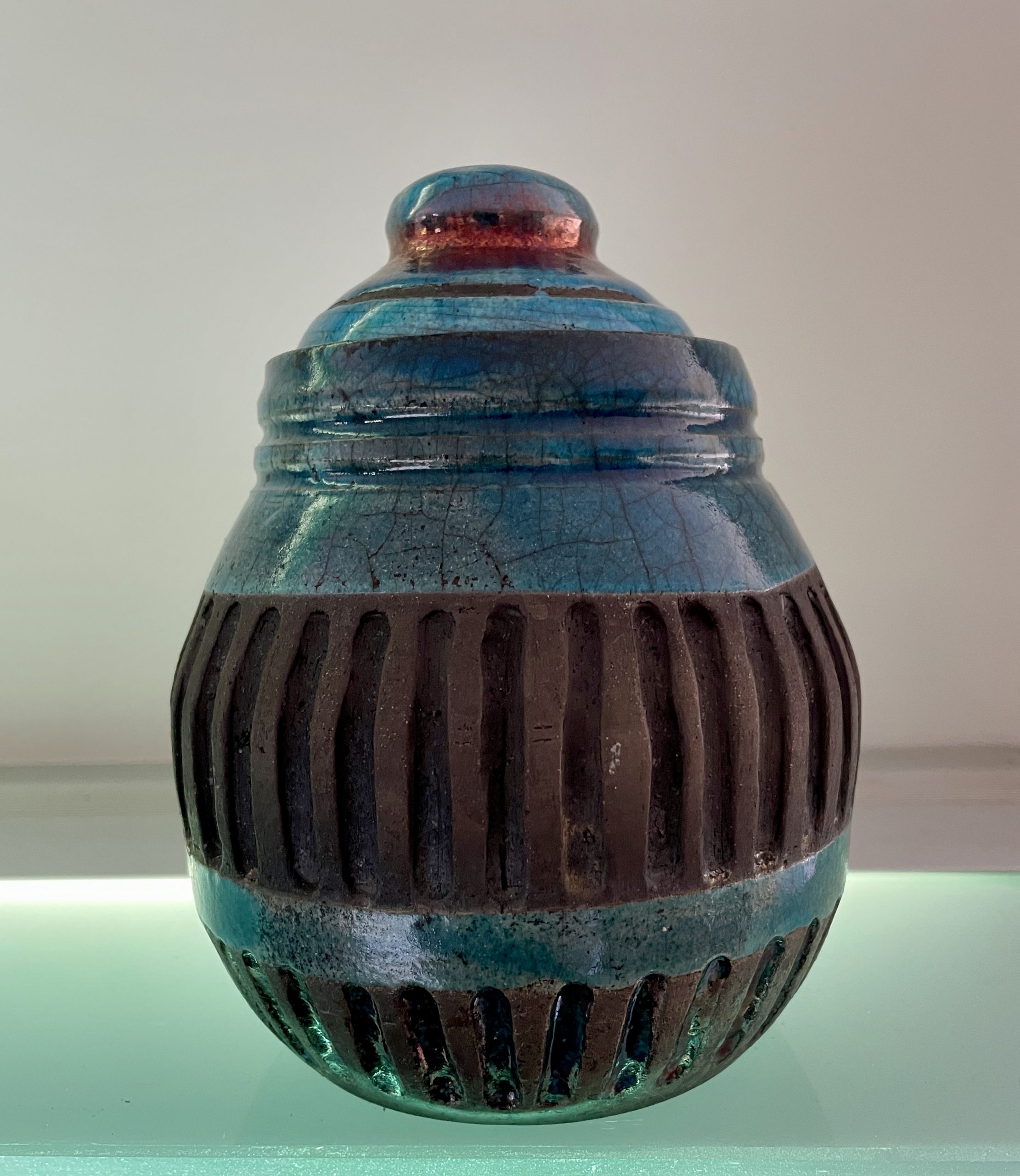
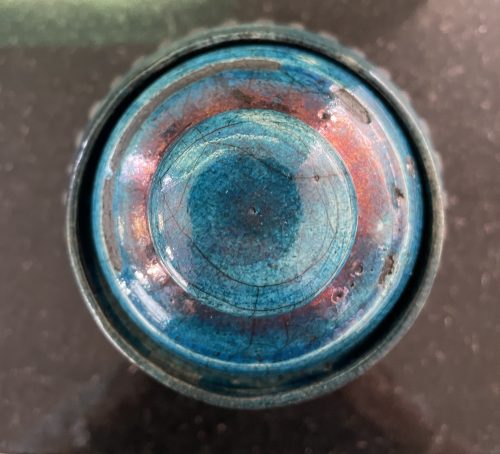 Raku firing produces unique unpredictable, and beautiful effects.
Raku firing produces unique unpredictable, and beautiful effects.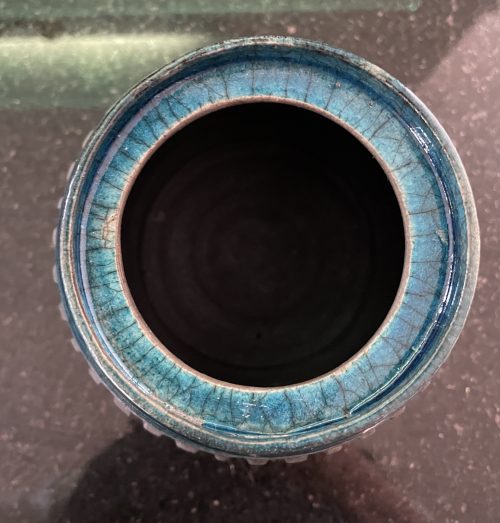

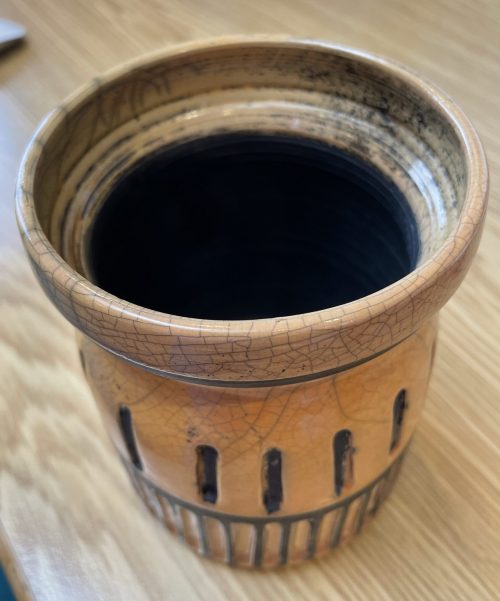
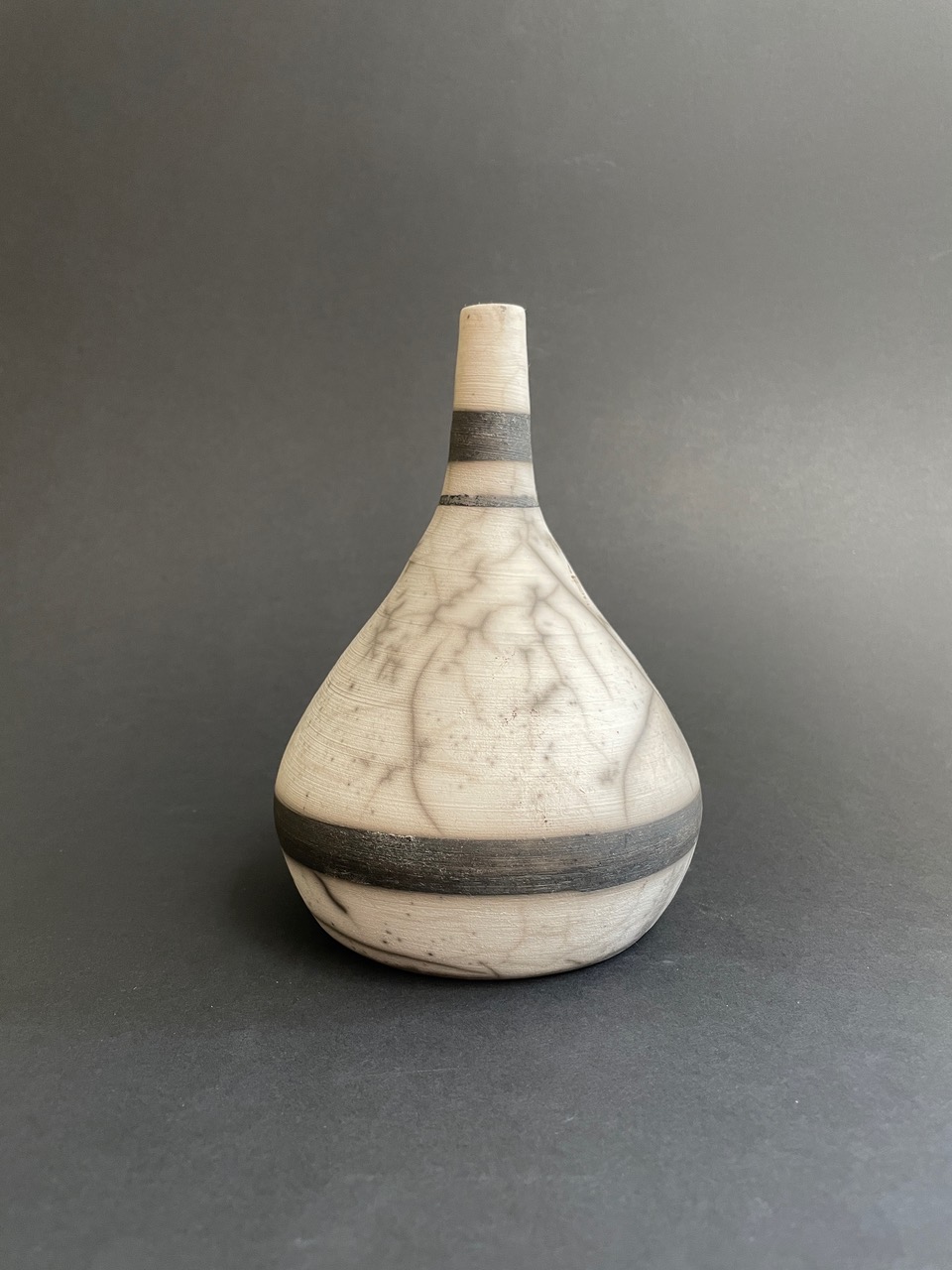
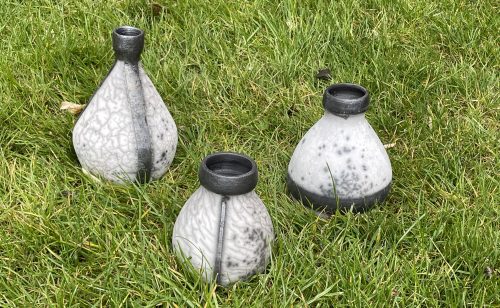 completely unique hand thrown naked raku bottle which makes an excellent gift. These are ornamental pieces as they are porous, and not food safe.
completely unique hand thrown naked raku bottle which makes an excellent gift. These are ornamental pieces as they are porous, and not food safe.
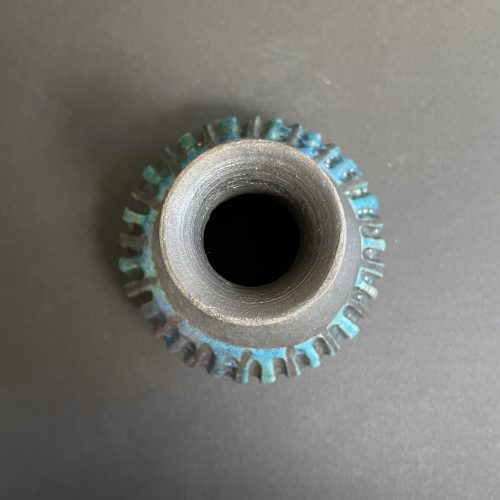 A completely unique hand thrown naked raku bottle which makes an excellent gift. These are ornamental pieces as they are porous, and not food safe.
A completely unique hand thrown naked raku bottle which makes an excellent gift. These are ornamental pieces as they are porous, and not food safe.